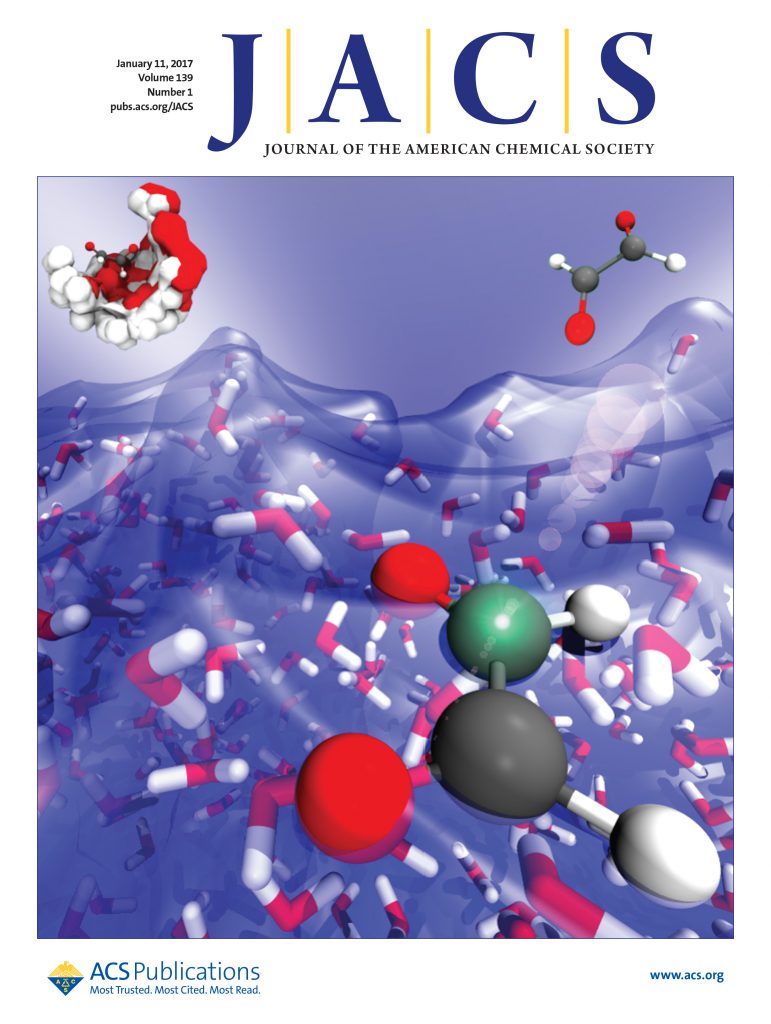Structural Basis and Rational Design of Nucleotide Analogue Inhibitor Evading the SARS-CoV-2 Proofreading Enzyme
IF 15.6
1区 化学
Q1 CHEMISTRY, MULTIDISCIPLINARY
引用次数: 0
Abstract
All coronaviruses (CoVs) encode an exoribonuclease in nonstructural protein nsp14 (nsp14 ExoN), which is required for the excision of mismatched nucleotides or nucleotide analogues (NAs) that are incorporated into nascent RNA. Here, we investigated the mechanism by which NAs evade SARS-CoV-2 nsp14 ExoN cleavage using chemically synthesized RNA with NAs incorporated at the 3′ end. Nsp14 ExoN exhibited significantly attenuated activity on RNA with sofosbuvir monophosphate (SMP) compared with natural nucleotides, remdesivir/molnupiravir monophosphate, and, in particular, AT-9010 monophosphate (ATMP), which has the same chemically modified ribose moiety as SMP, incorporated at the 3′ end. Cryo-electron microscopy structures of nsp10/14 bound to RNA-SMP/-ATMP and mutagenesis studies revealed the essential roles of H95/Q145/F146 in recognizing the base moiety and thus pulling the NAs into a favored conformation for cleavage. Therefore, NAs may evade nsp14 ExoN cleavage by having (1) a base that does not interact with H95, Q145, or F146 and (2) a chemically modified ribose. Guided by this hypothesis, two NAs were designed to effectively resist nsp14 ExoN cleavage. These results inform the rational design of anti-CoV NAs.

逃避SARS-CoV-2校对酶的核苷酸类似物抑制剂的结构基础及合理设计
所有冠状病毒(cov)在非结构蛋白nsp14 (nsp14 ExoN)中编码一个外核糖核酸酶,该酶用于切除合并到新生RNA中的不匹配核苷酸或核苷酸类似物(NAs)。在这里,我们研究了NAs通过在3 '端掺入NAs的化学合成RNA逃避SARS-CoV-2 nsp14外显子切割的机制。与天然核苷酸、remdesivir/molnupiravir单磷酸、特别是与SMP具有相同化学修饰核糖片段的at -9010单磷酸(ATMP)相比,Nsp14外显子对单磷酸索非布韦(SMP)的RNA活性显著减弱。结合RNA-SMP/-ATMP的nsp10/14的低温电子显微镜结构和诱变研究揭示了H95/Q145/F146在识别碱基片段并将NAs拉入有利构象进行切割方面的重要作用。因此,NAs可以通过(1)不与H95、Q145或F146相互作用的碱基和(2)化学修饰的核糖来逃避nsp14外显子的切割。在这一假设的指导下,设计了两个NAs来有效地抵抗nsp14外显子的切割。这些结果为抗冠状病毒核酸的合理设计提供了依据。
本文章由计算机程序翻译,如有差异,请以英文原文为准。
求助全文
约1分钟内获得全文
求助全文
来源期刊
CiteScore
24.40
自引率
6.00%
发文量
2398
审稿时长
1.6 months
期刊介绍:
The flagship journal of the American Chemical Society, known as the Journal of the American Chemical Society (JACS), has been a prestigious publication since its establishment in 1879. It holds a preeminent position in the field of chemistry and related interdisciplinary sciences. JACS is committed to disseminating cutting-edge research papers, covering a wide range of topics, and encompasses approximately 19,000 pages of Articles, Communications, and Perspectives annually. With a weekly publication frequency, JACS plays a vital role in advancing the field of chemistry by providing essential research.

 求助内容:
求助内容: 应助结果提醒方式:
应助结果提醒方式:


